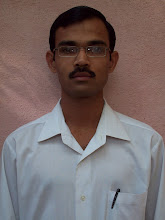Write up on Agriculture
On 12 of March I have undergone the agriculture module training by AME foundation. It was different as I have not taught these things through PPT before. Today I came to know about geographical area that how much land is being cultivated here and irrigated as well.
In India still 65-70% people are depending on agriculture and stays in rural area. They struggle hard to survive as the production and yield is not so sufficient and the price and marketing system is sometimes not favorable to the farmers.
India has
Geographical area – 328 million hectares
Cultivated area – 140 million hectares
Area under irrigation – 30 million hectares
And it is
2nd largest rice, vegetables and wheat producer
2nd largest onion growing country
Produces 41% of world’s mangoes, 23% bananas, 24% cashew nuts, 36% green peas and 10% onion
5th in area and production of potatoes
Largest milk producer and World leader in dairy animal products
And in Karnataka
Total geographical area is -190.50 lakh hectares
Cultivable area is - 123 lakh hectares
Cultivated area is - 116.70 lakh hectares
Area under irrigation is - 31 lakh hectares (26.5%)
Small and marginal farmers are - 73% and the land cultivating by them is 34.5%
In the decade 1960 Green revolution took place in Agriculture and tremendous change was found in farming and in 1980 onwards horticultural revolution in high value crops, White revolution in milk sector, Cooperative revolution in credit sector happened. As the result of these different methods in farming has occurred for ex:
Mechanization
Major and micro irrigation
Chemical inputs like fertilizers, pesticides and feticides
High yielding varieties and hybrids
Later we noticed that degrading soil fertility, soil carbon and capacity to hold moisture stagnating yields Erosion of biodiversity and farm ecosystem repeated crop failures due to environmental degradation increasing cost of production and decreasing net income for the farmers because of overusing the chemicals and lack of organic components.
Shrikanth sir showed a video how the pesticides are becoming the cause for death of farmer’s.
On the second day we went to Inamveerapur and Kuradikeri for field visit where we can get the real picture of AME foundation’s efforts in agriculture. We spent lot of time with farmers and in the farm so that we come to know the methods in sustainable agriculture. Mr. Desai explained about farmers field school and what are the roles played by the members. And lastly we played a game to energize. It was really new experience for us.
On the third day we participated in a debate. The topic was Path to Progress – “Rural Economy V/S Industrial Economy”. It came up very well and every one participated. After Shrikanth sir explained about integrated farming system and live stock. After noon they had an examination and feed back session. With this three day’s module was concluded.




 On the next morning we went to many households and collected the data regarding their livelihoods. Later we visited to Panchayat office to get some secondary data and we collected. After that we discussed with SHG members and came to know about their activities. And I spent some time with school children. In the evening we chatted with some young unemployed youth and they asked us the career opportunities, we tried to tell them.
On the next morning we went to many households and collected the data regarding their livelihoods. Later we visited to Panchayat office to get some secondary data and we collected. After that we discussed with SHG members and came to know about their activities. And I spent some time with school children. In the evening we chatted with some young unemployed youth and they asked us the career opportunities, we tried to tell them.




